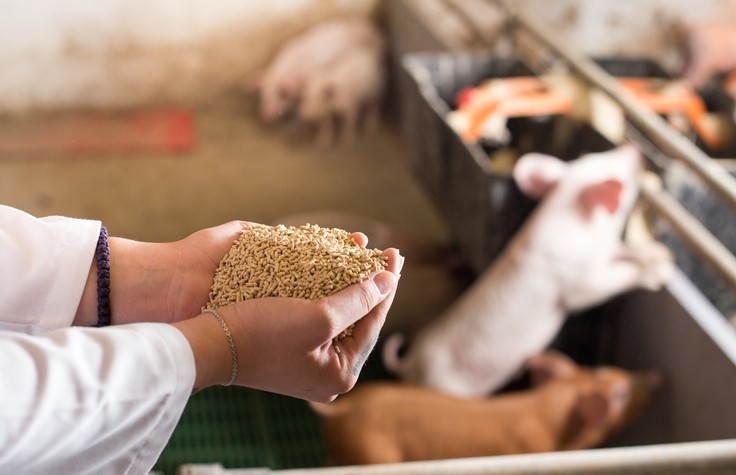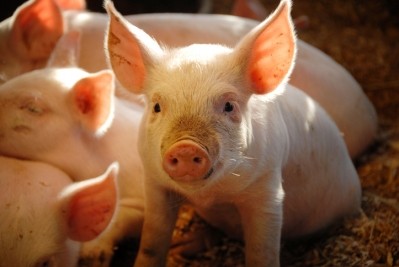Study: Reduced dietary protein decreases piglet diarrhea post-weaning

However, a low protein diet is not as effective as zinc oxide, and currently it has a negative impact on pig performance, according to the findings of a study published in Animal.
Dietary medicinal zinc oxide post-weaning will be phased out in the EU by 2022. Consequently, new strategies must be implemented to reduce post-weaning diarrhea in order not to increase antibiotics usage, noted the authors.
Background
Intestinal diseases are one of the most common problems in pigs worldwide and in commercial Danish pig productions the immediate period following weaning is characterized by a higher risk of post-weaning diarrhea (PWD).
Medicinal zinc oxide (ZnO) has proven to decrease the frequency of PWD in pigs and often has a positive effect on growth performance, said the researchers.
“However, feeding high levels of ZnO can be harmful for the environment as it results in higher zinc concentrations in the manure that can accumulate in the soil (Buff et al., 2005). In addition, high levels of ZnO have been associated with the development of antibiotic-resistant microorganisms (Bednorz et al., 2013), which is considered a hazard for both human and animal health,” they wrote.
The European Commission, consequently, decided to phase out the use of medicinal ZnO by June 1, 2022.
And this development increases the risk of PWD and the use of antibiotics, as well as a higher risk of decreasing growth performance, warned the team.
A high level of crude protein (CP) in feed results in high microbial fermentation of undigested proteins, which may lead to proliferation of pathogenic bacteria in the gastrointestinal tract (Nyachoti et al., 2006, Bikker et al., 2007, Heo et al., 2008), as well as create ammonia and toxic nitrogen compounds that may harm the intestine (Piva et al., 1996, Pluske et al., 2002).
“Therefore, feeding a low protein diet post-weaning has a reducing effect on PWD (Wellock et al., 2006, Opapeju et al., 2009), as the amount of undigested protein is reduced.
"However, a decreased level of dietary CP may create a serious deficiency of non-essential amino acids (AA) if they are not supplemented and thereby reducing growth performance of pigs (Callesen and Johansen, 2006, Opapeju et al., 2008). It is therefore necessary to find dietary solutions with minor reductions to the growth performance,” noted the authors.
They hypothesized that a low CP level post-weaning reduces protein fermentation in the colon and thereby reduces diarrhea when medicinal ZnO is excluded from the diet and that an increased CP level in the following phase could reduce the negative impact of a low CP diet on growth performance.
The objective of their experiment was to assess whether four different low protein strategies with different AA profiles could reduce the incidence of diarrhea as an alternative to medicinal ZnO and whether four protein strategies with different amino acid (AA) profiles could improve pig performance compared to the non-supplemented control group.
The study
Some 6,800 pigs (Danish Landrace x Yorkshire), weaned at around 28 days of age, were randomly assigned by sex and size to six dietary treatments.
The treatments were; standard CP levels (191, 184, 184 g/kg CP) and allocated 2,500 ppm ZnO in phase 1 (PC = positive control), standard CP levels (191, 184, 184 g/kg CP) and no added ZnO in phase 1 (NC = negative control), CP levels of 166, 184, 184 g/kg (LSS = low-standard-standard), CP levels of 166, 162, 192 g/kg (LLH = low-low-high), CP levels of 140, 193, 192 g/kg (VHH = very low-high-high), and lastly 140, 174, 192 g/kg CP levels (VMH = very low-medium-high).
The pigs entered the trial at ~ 7 kg BW and exited at ~ 30 kg BW.
Results
The teams found that, as they expected, the PC treatment resulted in 42% fewer diarrhea pen treatments in the total trial period compared to the NC group, whereas both PC and LLH had fewer diarrhea treatment days per pig compared to NC pigs.
Additionally, at the point of treatment, the NC pens had 33% fecal floor samples positive for pathogens, compared to 80% samples positive for pathogens in the PC pens.
“This suggests that ZnO has a particular positive effect on non-infectious diarrhea without bacterial involvement. A reduction in dietary CP levels in phase 1 led to a reduced average daily gain (ADG) in LLH and VMH pigs and a poorer feed conversion ratio (FCR) in VHH pigs during the overall study period compared to the NC pigs.”
They concluded that a diet with low CP levels from weaning to about 15 kg BW had a reducing effect on diarrhea, ADG was decreased ADG but FCR was unaffected.
Source: Animal
DOI: https://doi.org/10.1016/j.animal.2020.100075
Title: Low protein diets without medicinal zinc oxide for weaned pigs reduced diarrhoea treatments and average daily gain
Authors: Lynegaard et al








